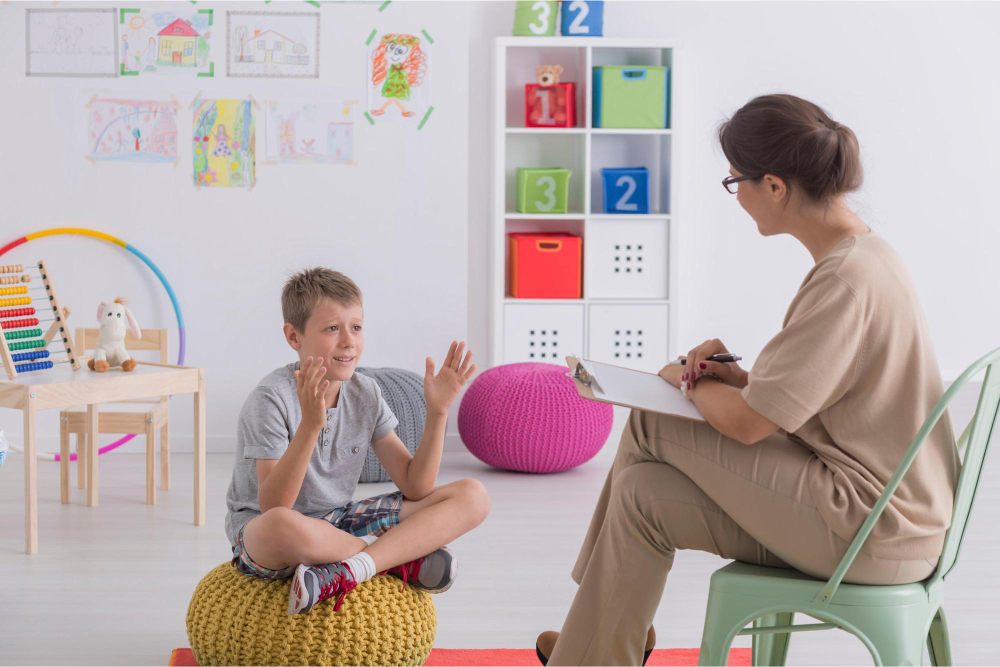Beyond Academics: How Finnish Schools Teach Life Skills, Empathy, and Critical Thinking
August 6, 2025

August 6, 2025

Imagine a classroom where math and literature are taught side-by-side with mindfulness, collaboration, and emotional awareness. In Finnish schools, education goes far beyond textbooks and test scores. Here, students are not only prepared for exams—they are prepared for life.
In recent years, educators and school leaders from around the world have looked to the Finnish education system for inspiration. Why? Because Finland has quietly developed a powerful model that prioritizes well-being, social-emotional development, and real-world skills just as much as traditional academics.
This approach is built on the belief that children learn best when they feel safe, supported, and empowered—not pressured or compared. By integrating life skills, empathy, and critical thinking into the school experience, Finnish schools create thoughtful, responsible, and capable individuals.
Let’s explore how this holistic model works in practice—and how you can witness it for yourself.
“The purpose of education is to support pupils’ growth into humanity and into ethically responsible membership of society.” - Finnish National Core Curriculum, 2016
This powerful sentence isn’t just a slogan—it is the backbone of Finnish schools. In Finland, education is not merely about preparing students for tests or careers. It is about preparing them for life—as citizens, thinkers, and human beings.
At the heart of Finnish education lies a simple yet revolutionary idea: students are people first, learners second. Before they are evaluated for knowledge, they are seen, heard, and valued as individuals with unique emotions, strengths, and potential.
Unlike many systems that prioritize performance rankings, strict standards, or relentless testing, Finland takes a broader view. The aim is not to produce the highest scores, but to nurture balanced, capable, and compassionate individuals.
Finland’s National Core Curriculum reflects this philosophy in its very structure. While academic subjects like math, science, and language remain important, they are taught within a framework of broader life competencies. These include:
These cross-disciplinary goals, known as transversal competencies, are integrated into all lessons and activities—not taught separately. Whether students are reading literature or solving physics problems, they are also developing values, skills, and habits for life.

To make this vision possible, Finnish schools are built on three core values that guide both policy and daily practice:
This human-centered approach means that Finnish students aren’t competing against each other—they’re supported in discovering who they are, both academically and personally.
Social-emotional learning (SEL) refers to the process of developing self-awareness, self-control, and interpersonal skills. These are the life tools we all use to manage emotions, build relationships, and make responsible decisions. In Finland, SEL is not a separate subject—it is woven into the fabric of school life. For example:
The goal is to raise emotionally intelligent students who can navigate both personal challenges and social dynamics.
A Finnish second-grade teacher might teach empathy through a storybook. A fifth-grade class may role-play real-life scenarios, such as handling peer conflict. The message is clear: emotions matter, and learning to manage them is part of becoming a capable person.
According to UNESCO, SEL contributes directly to better academic outcomes, mental health, and civic engagement. Finland’s model shows how it can be successfully embedded into daily learning.

How do you teach empathy? In Finland, the answer is simple: you live it. Empathy in Finnish schools isn’t a side lesson or an occasional project—it’s an everyday practice. From the way students interact to how teachers respond to emotions, empathy is woven into the rhythm of school life. Unlike systems that reward only academic achievement, Finnish education nurtures the emotional and social dimensions of each child. Empathy is treated as a core competency, just like reading or problem-solving. Because without the ability to understand others, how can students truly thrive in the world?
Here’s how empathy comes alive in Finnish classrooms:
Finnish teachers don’t just teach empathy—they embody it. They listen carefully to their students, respond calmly to emotional outbursts, and treat every child with dignity. If a student is upset, the teacher takes the time to understand what’s wrong before moving on with the lesson. This type of emotional modeling is powerful. Children don’t learn empathy from worksheets—they learn it by experiencing it. When they feel heard and respected, they naturally extend that respect to others.
.png)
When empathy becomes part of the classroom culture, something remarkable happens: students begin to look out for one another.
It creates a school environment where students feel safe to be themselves, make mistakes, and grow—together. And this emotional safety becomes the foundation for everything else, including academic success.
In many countries, life skills—like managing emotions, working in a team, or planning a healthy routine—are often seen as the responsibility of families, community programs, or life experience. But in Finnish schools, these skills are seen as too important to leave to chance. That’s why they are taught directly, deliberately, and consistently—as part of the school curriculum.
Life skills education in Finland is broad and practical. It includes:
These aren’t theoretical topics. They’re practiced daily, giving students real experience in making decisions, solving problems, and handling everyday responsibilities.
.png)
Here’s how life skills come to life in practice:
Life skills are not treated as extra—they are treated as essential. Finland understands that when students leave school, they won’t just be asked to remember dates or formulas. They’ll need to manage money, stay healthy, communicate clearly, and adapt to change.
Critical thinking is often associated with academics—solving math problems, analyzing texts, or evaluating scientific claims. But in Finnish schools, critical thinking also means understanding what is right, what is fair, and what truly matters in life. This is where ethical education comes in. In Finland, students are not only taught to think clearly, but also to think deeply and ethically. From a young age, they are encouraged to explore questions of morality, fairness, responsibility, and human values—skills that are essential for shaping thoughtful, compassionate citizens.
Ethical reasoning begins in early childhood education and continues through secondary school. It's not presented as a rigid set of rules, but as an open, reflective conversation. Here are some of the ways it’s introduced:
Ethical education in Finnish schools is based on dialogue, not lectures. Teachers don’t stand at the front of the room with answers—they sit with students in a circle, encouraging every voice to be heard. This approach:
Students are not told what to think. Instead, they’re shown how to think through moral questions in a safe and supportive space. The goal is not to produce one “correct” answer—but to develop reasoning, empathy, and self-awareness.

Finnish teachers are trained to facilitate ethical conversations with sensitivity and neutrality. They ask open-ended questions, challenge assumptions, and help students consider different perspectives. For example, in a discussion about fairness, a teacher might ask:
These questions deepen students’ understanding and help them develop a strong inner compass, rather than relying solely on external rules or authority.
Rather than focusing on rote memorization or textbook definitions, Finnish education emphasizes thinking, questioning, and making sense of the world. The goal isn’t to fill students with information—it’s to help them become curious, independent thinkers who can evaluate ideas and solve real-life problems.
The main method used to build critical thinking in Finnish schools is inquiry-based learning. This means students are encouraged to:
This approach makes learning active and student-driven, instead of passive and teacher-led. Students aren’t simply told what to learn—they help shape what and how they learn. Let’s take a common topic like climate change. In a traditional classroom, students might read a chapter and take a quiz. But in a Finnish school, the same topic could look like this:
This process builds not just knowledge, but critical engagement with real-world issues.
In this model, Finnish teachers don’t stand at the front delivering all the answers. Instead, they act as facilitators and mentors—guiding students to explore ideas, ask better questions, and make connections between concepts.
Teachers might say:
This helps students learn to think deeply, flexibly, and independently—skills they will use long after they leave the classroom.

Assessment in Finnish schools also reflects this philosophy.
Instead of relying heavily on standardized tests or high-stakes exams, students are assessed through:
These methods evaluate how students think, collaborate, solve problems, and apply their knowledge—not just whether they memorized the right answer. This also reduces test anxiety and helps students see assessment as part of learning, not a punishment.
The result of this approach is a generation of learners who are:
By making critical thinking a daily habit, Finnish schools help students become not just smart—but wise, thoughtful, and ready to face a changing world.

In Finnish schools, teachers are more than educators—they are guides, mentors, and trusted adults in a child’s life. And that trust begins with how they are trained, respected, and empowered. Unlike in many systems where teachers are overworked, underpaid, or micromanaged, Finnish teachers are trusted professionals—and this single fact transforms the entire educational experience.
Every teacher in Finland must earn a master’s degree before stepping into the classroom. Their university training goes far beyond subject knowledge—it includes:
This means Finnish teachers are not only content experts—they are experts in learning and in children. But it’s not just about degrees. It’s about the deep culture of professional respect. Teachers have the autonomy to design lessons based on the needs of their students. They’re not forced to follow scripts or rush through a fixed curriculum. They’re allowed—and expected—to be thoughtful, creative, and responsive.
More than anything, Finnish teachers are seen as whole-child mentors. They don’t just transfer knowledge—they nurture growth. Because class sizes are small and the school day is paced for learning—not pressure—teachers have time to:
They know their students—not just by name, but by personality, needs, and potential. This allows them to offer targeted support and celebrate individual progress, no matter how big or small. For example, if a child feels anxious before presenting in class, the teacher may quietly offer extra practice time, pair them with a supportive friend, or allow a different format for expression. These small adjustments show students they are valued as people, not just performers.

This close connection also gives students a sense of emotional security, which is vital for learning. Finnish students know their teachers care—not just about their grades, but about their feelings, their well-being, and their lives. Teachers check in regularly, take time to talk, and create classroom environments where every student feels safe to take risks, ask questions, and be themselves. It’s not unusual for students to speak freely with teachers about worries or challenges at home or school. In many ways, the teacher’s role overlaps with that of a coach, counselor, and role model—a trusted adult who is both emotionally available and intellectually present.
When students feel this level of support, they:
This is how Finnish education nurtures the whole child—not just through curriculum, but through compassionate, capable teachers who make each child feel important, understood, and ready to grow.
In Finland, the environment students walk into each morning is calm, welcoming, and respectful. From the youngest learners to high school students, everyone is treated as a valued member of the school community. The school culture in Finland is intentionally designed to be safe, supportive, and democratic—because when students feel safe and heard, they’re more likely to thrive, take risks, and grow into responsible, confident individuals.
Walk into a typical Finnish school, and you might be surprised by what you don’t see:
The overall tone is one of mutual respect—between students, teachers, and school staff. Discipline is handled gently, with a focus on understanding and learning from mistakes rather than punishment. This culture of respect fosters emotional safety, which is essential for learning. Students feel free to ask questions, speak their minds, and express themselves without fear of embarrassment or judgment.
One of the most unique aspects of Finnish school culture is the active participation of students in decision-making. Rather than being passive recipients of rules and routines, students are invited to help shape their school environment. For example:
This democratic approach teaches students that their voices matter—and that they can make a difference in their community. It also strengthens civic awareness, encouraging them to be thoughtful contributors to society beyond school.

A supportive school culture also means having the right systems in place to help students who need extra care—whether academically, emotionally, or socially. Every Finnish school is equipped with:
But support isn’t limited to specialists. Teachers play a central role in checking in on students regularly, noticing signs of stress, and creating a safe space for open conversations. Mental health is openly discussed in classrooms through:
There’s a clear understanding that students can only learn well when they feel emotionally stable, accepted, and supported.
The guiding principle in Finnish schools is simple: empowerment over control. Rather than enforcing strict rules to maintain order, Finnish educators build a culture of responsibility and care. Students are given freedom—not just because they’ve earned it, but because they are trusted to handle it. This trust is empowering. It motivates students to:
In the end, this school culture helps raise young people who are not just academically capable, but socially aware, emotionally secure, and ready to take part in a democratic society.
What happens when students are taught not just to succeed academically, but to be kind, resilient, and thoughtful?
In Finland, the outcomes are both measurable and meaningful. According to the OECD’s Programme for International Student Assessment (PISA), Finnish students consistently report higher-than-average levels of life satisfaction, with over 90% saying they feel safe at school, compared to the OECD average of 78%. A 2022 study by UNICEF ranked Finland among the top three countries in the world for child well-being, citing strong support systems and emotional security in schools.
Additionally, bullying and dropout rates are significantly lower than in many other developed countries. For instance, Finland's school dropout rate for upper secondary education is under 9%, while the EU average is closer to 10.5% (Eurostat, 2023). Mental health support, inclusive teaching, and a strong sense of belonging contribute to these outcomes.
But perhaps the most powerful result is seen over time: Finnish students grow into socially responsible adults who participate actively in democratic life. Voter turnout among young people in Finland is among the highest in the EU, and civic engagement—such as volunteering and community involvement—is well above average.
While many systems emphasize competition and test performance, Finnish schools invest in the whole person, quietly preparing students not just to pass exams—but to live well, lead with empathy, and make a lasting impact on society.
.jpg)
Reading about this model is one thing—experiencing it is something else entirely.
At TechClass, we offer personalized school visits in Finland for educators, administrators, and school leaders who want to see this unique approach in action. Whether you’re designing a new curriculum or simply seeking fresh ideas, a Finnish school visit offers insight, inspiration, and practical tools you can take home.
Finnish schools show us that education can be kind, meaningful, and life-changing. When schools teach empathy alongside algebra, and life skills alongside literature, children grow into adults who care, think, and thrive.
So here’s a question: What if your school prioritized people over performance?
If you’re ready to explore what’s possible beyond academics, come and see how Finland does it.